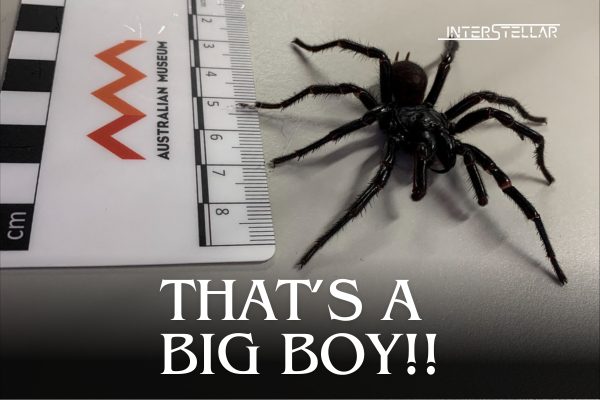Discovery of “Big Boy” Spider: A Larger, More Venomous Funnel-Web Species
Australian scientists have identified a larger and more venomous species of the Sydney funnel-web spider, one of the most dangerous spiders in the world. Nicknamed “Big Boy,” this newly recognised species stands out for its size and potent venom.
A Remarkable Find Near Newcastle
The “Big Boy” spider was first discovered in the early 2000s near Newcastle, 170 km (105 miles) north of Sydney, by Kane Christensen, a spider enthusiast and former head of spiders at the Australian Reptile Park. It has now been officially classified as a separate species by researchers from the Australian Museum, Flinders University, and Germany’s Leibniz Institute.
Named Atrax Christenseni, in honour of Christensen’s contributions, this spider measures up to 9 cm (3.54 inches), significantly larger than the more common Sydney funnel-web, which grows to about 5 cm. Its distinctive features include larger venom glands, longer fangs, and a robust build.
Venom Potency and Safety Measures
The nocturnal “Big Boy” spider is predominantly active between November and April. Similar to other funnel-web species, only the males carry venom strong enough to be fatal to humans. However, no deaths have been attributed to “Big Boy,” as the existing antivenom for Sydney funnel-web bites is effective against this species too.
Despite its dangerous reputation, fatalities from funnel-web spider bites have been virtually eliminated since the introduction of antivenom in the 1980s. There have been 13 recorded deaths from funnel-web bites, all caused by males of the species.
Precautions for Encounters
The “Big Boy” spider may occasionally be found in homes, often wandering into garages, bedrooms, or other indoor spaces at night. Christensen advises against handling these spiders, noting their ability to produce significant amounts of venom. “I would not recommend touching them, that’s for sure,” he cautioned.
This discovery adds to the understanding of Australia’s diverse and fascinating wildlife while reinforcing the importance of awareness and safety when dealing with venomous species.
With inputs from Reuters





